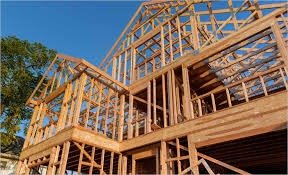How to Reduce Waste in Residential Framing Projects
In residential construction, framing is one of the most material-intensive phases of a project. Lumber, sheathing, nails, and connectors are used in large quantities — and any mistakes or poor planning can quickly turn into waste. Across the United States, contractors and suppliers are becoming more aware of how much money and resources are lost through inefficient framing practices.
Reducing waste in residential framing projects not only helps protect profits but also supports sustainability and responsible resource management. For builders, developers, and material suppliers, even a few small improvements can make a big difference in both cost and performance.
The Cost of Material Waste
Construction waste is a major issue in the U.S. housing industry. Framing accounts for a large percentage of material waste because it involves repetitive cuts, adjustments, and design changes in the field.
For example, if a project’s framing plans are not properly reviewed before ordering materials, the crew might end up with excess lumber, wrong sizes, or offcuts that cannot be reused. Over-ordering lumber by just 5% can lead to hundreds of dollars in unnecessary costs on a single home — and thousands on larger developments.
That’s why detailed quantity planning through lumber takeoff services has become a valuable tool for contractors. These services help identify exactly how much material is needed for walls, floors, and roofs before construction begins.
Accurate Planning and Takeoffs
Accurate takeoffs are the first step to minimizing waste. When a project team knows the exact amount of lumber and sheathing required, they can order efficiently and reduce surplus materials that might end up in dumpsters.
Professional wood framing takeoff services analyze construction drawings and provide detailed breakdowns of all framing components — from studs and headers to joists and rafters. By relying on accurate digital takeoffs, contractors can avoid human errors that often happen with manual counting.
This not only reduces waste but also helps builders compare suppliers, plan deliveries, and forecast costs with confidence.
Prefabrication and Modular Construction
Another way to reduce framing waste is through prefabrication or modular construction. Instead of cutting and assembling all framing components on-site, wall panels or floor systems can be built in a controlled environment using precision tools and automated machinery.
In a shop setting, material use can be optimized, cuts are more accurate, and scrap wood can often be reused for smaller parts. When these prebuilt sections arrive at the jobsite, they fit together with minimal waste and faster installation.
Although not every project can use full modular framing, even partial prefabrication — such as pre-cut studs or truss systems — can significantly reduce waste.
Smart Design and Communication
Many waste issues in framing projects come from poor communication between the design and construction teams. Simple design adjustments can lead to major savings if they are identified early. For example, designing wall lengths in multiples of standard lumber sizes can prevent unnecessary cuts and leftovers.
Contractors can also review framing layouts with engineers or architects before starting work to identify potential conflicts or oversized components. This coordination helps reduce the number of changes made during construction — one of the biggest sources of waste.
When accurate takeoff data and design coordination work together, projects run smoother and generate far less waste.
Reuse and Recycling
Even with the best planning, some waste will always occur. The key is to manage it effectively. Many U.S. builders now sort and recycle their wood waste instead of sending it all to landfills.
Clean, untreated lumber can often be chipped for mulch or animal bedding, while offcuts can be reused for blocking, bracing, or temporary supports. Recycling centers and lumber suppliers in most regions now offer drop-off or collection programs for scrap wood.
Implementing a simple recycling plan on-site not only reduces disposal costs but also demonstrates a commitment to environmental responsibility — something that matters more and more to clients and communities.
Training and Crew Awareness
Sometimes, waste reduction is as simple as raising awareness. When framing crews understand how their work affects material usage, they tend to become more careful with cuts and measurements.
Training sessions that focus on material handling, storage, and cutting techniques can greatly reduce accidental damage and waste. Keeping lumber covered, dry, and properly stacked also prevents warping or rot, which often leads to replacement costs.
Small habits — like organizing scrap wood by size or planning cuts to minimize leftovers — can have a big impact when applied consistently across multiple projects.
The Business Case for Waste Reduction
Reducing framing waste is not just good for the environment — it’s good for business. Contractors save on material costs, suppliers improve inventory management, and homeowners get a more efficient, affordable build.
Accurate estimating through lumber takeoff services and wood framing takeoff services gives builders the data they need to plan smartly and minimize overages. Combined with design coordination, prefabrication, and responsible recycling, these practices can lead to significant savings on both small and large residential projects.
Final Thoughts
Every board, panel, and fastener used in a framing project represents real money and resources. When contractors take the time to plan carefully, communicate clearly, and train their crews, waste can be reduced dramatically.
The connection between precision planning and material efficiency is undeniable. Whether you’re a builder, subcontractor, or supplier, adopting waste-reduction strategies and using reliable takeoff data can help your business stay competitive in today’s construction market — while doing your part to build a more sustainable future.
